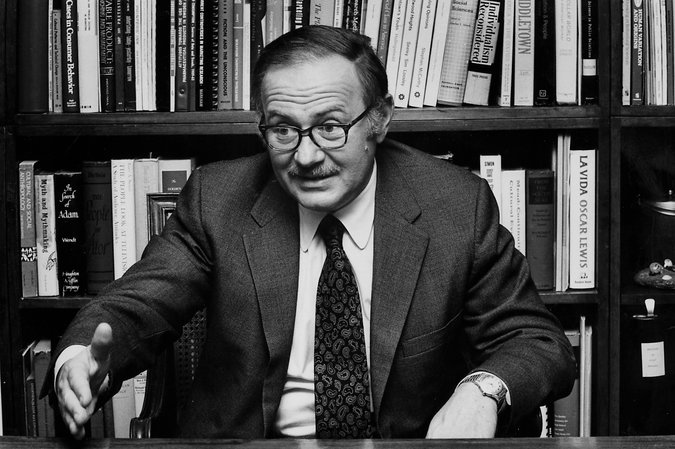Categories
Why do we spend time on crossword puzzles, ukulele playing, or any number of activities that have little to do with our survival? How can social services tap into the interest and focused energy that propels us to do so?
Back in the 1950s, adorable rhesus monkeys helped us understand why. They kept playing with their mechanical puzzles even when they exhausted their rewards. In fact, rewarding the monkeys dampened their spontaneous puzzle play. This finding flew in the face of behaviorism: the once dominant theory of human behavior. This was theory that said we act intentionally because of external rewards and environmental reinforcements. For example, we study for a test because that’s reinforced by grades. Problem is, this theory couldn’t explain why people would sometimes act on their own volition, trying new things without any expectation or reward.

So some scientists came up with an alternative explanation called Drive Theory. This theory said that people are motivated to act to reduce physiological needs like hunger, sleep, and sex. But, this explanation also fell short. Even when people had all their needs met, they persisted in playful and exploratory behaviors. They weren’t trying to decrease bad stuff in their life, they were trying to increase good stuff in their life.
Enter the concept of intrinsic motivation. As Stefan Domenico and Richard Ryan describe in their paper on the emerging neuroscience, “Intrinsic motivation is the spontaneous tendency to seek out novelty and challenges, to extend and exercise one’s capacity to explore and to learn.” And thanks to increasingly sophisticated pictures of our brains, we know now that intrinsic motivation has a neurobiological basis. Dopamine – the happy chemical – is directly linked with intrinsic motivation, and also associated with increased positive feelings, creativity, and cognitive flexibility.
All of this points to our ability to act because we want to – not simply because we feel compelled to. This aligns with basic psychology theory. That’s theory that says humans want to increase their sense of competency and autonomy. Competency is all about feeling we ‘can do’ something; that we’re capable humans. It’s that feeling when you’ve managed to assemble a piece of Ikea furniture: it was challenging, and you mastered it. Autonomy is all about feeling that you’re in the driver’s seat. That your behavior is yours – it’s not pressured or coerced.
We can even go deeper. All the way to evolutionary theory. Because intrinsic motivation can open us up to brand new situations – situations that call on new skills – it sets us up to cope with uncertain future events. As the researchers Deci and Ryan point out, “If people did not experience satisfaction from learning for its own stake (but instead needed to be prompted by external reinforcements) they would be less likely to engage the skills and capacities they inherited, to develop new potentialities.”
Question is: what enhances people’s intrinsic motivation? What increases the likelihood they will develop new potentialities?
The literature offers a few helpful hints for enabling intrinsic motivation, and removing the barriers that stand in the way.
Enablers:
Freely pursued activities
Positive feedback
Prioritizing interest and fun
Optimal challenge = Just enough novelty to produce positive excitement
Curiosity = Just enough inconsistency between what somebody knows & wants to know
Barriers:
Negative feedback
Deadlines
Surveillance / oversight
Amplifying intrinsic motivation isn’t something our welfare state has historically thought much about. Many of our social services were designed in the 1950s and 1960s, when behaviorism was at its height. There was this assumption that rewards and punishments were the only things that motivated action. So benefits and services were predicated on contingent behavior. Search for a job once a week, and keep your monthly benefit. Don’t search for a job, and lose your monthly benefit. And this assumption doesn’t just show up in our user facing services, but in staff facing interventions too. Do your time sheets, and get paid. Don’t do your log notes, and face disciplinary action.
An analytic question to mull over:
Where does this behaviorist assumption show up in your social service?
A generative question to explore:
What would our welfare state looked like if were rooted in intrinsic motivation theory?
A conversation to have:
What should be the balance between social services ‘compelling’ certain behaviors (e.g health & safety related) and ‘enabling’ more intrinsically motivated behaviors?
Something practical to try:
Pick a day, and track your own sense of novelty, boredom, anxiety, and positive excitement. And ask one of your users or staff to do the same.At the end of the day, sit down with the person, and jointly reflect on what you unearthed. What activities could you try to increase novelty and positive excitement?
The emerging neuroscience of intrinsic motivation: A new frontier in self-determination research
Download Stefano Dominco and Richard Ryan's terrific overview of the topic
The science & art of the sample: How Daniel Yankelovich brought social science into the corporate world, and how social services can & should do the same

Daniel Yankelovich replaced intuition with rigor. One of the pioneering pollsters, Yankelovich managed to make social science research sexy. As his New York Times obituary put it, “Until the late 1950s, market research, when done at all, was a relatively crude way of trying to figure out whether a new soap or a set of kickable tires would go over with the American public. Often it was just guesswork. No corporation today would risk introducing a product without knowing, in advance, how well it is likely to sell, what it should look like, what to call it, and how to package, advertise and distribute it.” Nor would any politician.
Yankelovich, who passed away this past Friday at 92, showed generations of business leaders, politicians, and policymakers the power of asking darn good questions to everyday people. Questions about what folks preferred, what that said about their underlying values and aspirations, and what totally turned them on and off.
Core to Yankelovich’s approach was sampling and segmentation. As he explained it, “Good segmentations identify the groups most worth pursuing – the underserved, the dissatisfied, and those likely to make a first-time purchase. They are dynamic – they recognize that the first-time purchaser may become underserved or dissatisfied if his or his situation changes.”
“Good segmentations identify the groups most worth pursuing – the underserved, the dissatisfied…”
Yankelovich’s core audience was obviously different to ours – corporate decision-makers making & marketing consumer products. But, his critique of the bad data on which corporate decision-makers base their product innovation and marketing strategies rings even more true for non-profit leaders making & marketing social services.
He admonishes, “If meaningful segmentations depend on finding patterns … then to construct one properly, you need to gather the relevant data. ..” And that data is different if you’re trying to create a brand new product or service, then if you’re advertising your existing product or service.
Given we develop new services, if we follow Yankelovich’s advice we’d collect at least four kinds of data to produce segments that differ in their goals, needs, and behaviors:
- users of related services that already meet similar needs
- partners such as distributors and retailers (in our case, referral partners & related services)
- usage data on consumers, supplemented by detailed analyses of their preferences and needs
- analysis of existing customers who remain loyal (why?) and those dissatisfied or willing to switch to something else
An analytic question to mull over:
What do you already know about the people who use your service versus don’t use your service? Where does this data come from?
A generative question to explore:
How would you find the people who could be using your service but aren’t? Where might you go to have conversations with them?
Re-discovering Market Segmentation
Read the 2006 paper Yankelovich and David Meer wrote for Harvard Business Review on doing segmentation right

